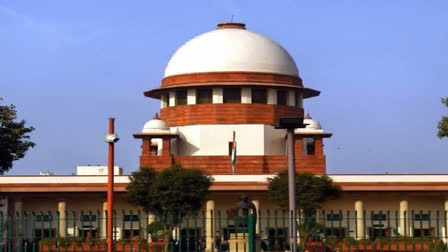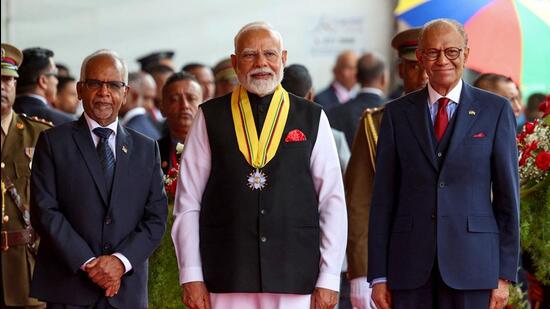Maternity Leave as a Constitutional and Reproductive Right

- 25 May 2025
Background:
In a landmark ruling in K. Umadevi v. Government of Tamil Nadu (May 2025), the Supreme Court (SC) affirmed that maternity leave is not merely a welfare measure but a constitutional and reproductive right of women. Setting aside the Madras High Court’s judgment, the apex court extended maternity benefits to a government school teacher for her third child, rejecting the Tamil Nadu government's policy that restricts such benefits to only the first two children.
Background of the Case:
The petitioner, a teacher employed in a Tamil Nadu government school, was denied maternity leave for her third biological child, citing Fundamental Rule 101(a) which limits benefits to women with fewer than two surviving children. Notably, the child in question was from her second marriage, while the earlier two children were in the custody of her former husband and born before her employment. The single bench of the High Court had ruled in her favour, finding the state rule inconsistent with the Maternity Benefit Act, 1961 and invalid under Article 254 (repugnancy with central law). However, a division bench reversed this decision, prompting an appeal to the SC.
Key Observations by the Supreme Court:
- Maternity leave is integral to a woman’s reproductive autonomy and thus protected under Article 21 of the Constitution, which ensures personal liberty.
- It is also aligned with Directive Principles of State Policy (Article 42) that mandate the state to ensure humane work conditions and maternity relief.
- The SC emphasized that reproductive rights are recognized under international human rights law, including the rights to health, privacy, dignity, equality, and non-discrimination (as per the Universal Declaration of Human Rights).
- The Court clarified that population control, though a valid public policy goal, cannot override the constitutional guarantee of reproductive choice and health.
Reaffirming the Maternity Benefit Act, 1961 (Amended 2017):
- The Act applies to workplaces with 10 or more employees, including both public and private sectors.
- Provides 26 weeks of paid maternity leave for women with fewer than two surviving children, and 12 weeks for the third or subsequent child.
- Also covers adoptive and commissioning mothers with 12 weeks of leave.
- Ensures job security, access to crèche facilities in establishments with 50+ employees, and promotes work-from-home options during or after pregnancy.
Significance of the Judgment:
- The verdict ensures gender equity in the workforce by reinforcing women’s right to combine motherhood with professional aspirations.
- It highlights the need to harmonize state policies with central welfare legislation and constitutional mandates.
- It reflects the Court's broader jurisprudence, such as in Suchita Srivastava v. Chandigarh Administration, which had affirmed a woman’s reproductive choices as part of her autonomy.
Implications for Policy and Governance:
This judgment strengthens women’s workforce participation by addressing a key dropout point—childbirth. It serves as a precedent for inclusive, rights-based policy design and calls for reviewing restrictive service rules across states. It aligns with India's commitments under international human rights frameworks and the Sustainable Development Goals (SDG 5: Gender Equality).
In conclusion, the Supreme Court’s verdict elevates maternity leave to a constitutionally protected right, advancing both social justice and women’s empowerment in India’s democratic framework.
India–Mauritius Enhanced Strategic Partnership

- 15 Mar 2025
In News:
India and Mauritius have elevated their bilateral relationship to an Enhanced Strategic Partnership, underscoring deep-rooted historical ties, shared cultural linkages, and growing strategic alignment in the Indian Ocean Region (IOR). This elevation came during Prime Minister Narendra Modi’s visit to Mauritius in March 2025, marking a new phase in India’s engagement with the Global South through the unveiling of the MAHASAGAR Vision—Mutual and Holistic Advancement for Security and Growth Across Regions.
Key Agreements and Strategic Cooperation
A total of eight bilateral agreements were signed, focusing on trade, defense, maritime security, financial crimes, and developmental cooperation. A landmark agreement was the signing of India’s first-ever rupee-denominated Line of Credit to Mauritius, worth ?487.6 crore, aimed at upgrading the island’s water supply system. This also complements a broader move toward trade settlement in local currencies, reducing dependence on foreign exchange and enhancing resilience in bilateral commerce.
In the realm of maritime security, the partnership now includes expanded white shipping information sharing, enhanced joint maritime surveillance, and greater utilization of strategic facilities on Agalega Island, developed with Indian assistance. India reaffirmed its commitment to safeguarding Mauritius’s Exclusive Economic Zone (EEZ) and supporting the establishment of a police academy and a national maritime information-sharing centre.
India also extended support to Mauritius’s claim over the Chagos Archipelago, opposing colonial remnants and reinforcing its consistent stance on sovereignty and decolonization in global forums.
MAHASAGAR Vision and Global South Outreach
The newly unveiled MAHASAGAR initiative builds upon India’s earlier SAGAR doctrine, broadening the framework to include developmental cooperation, technology transfer, capacity building, concessional finance, and joint security across the Global South. It strengthens India’s position as a net security provider and first responder in the IOR, evident from its assistance during Cyclone Chido and the Wakashio oil spill.
The visit also witnessed the inauguration of the Atal Bihari Vajpayee Institute of Public Service and Innovation, a health centre, and 20 community projects built with Indian grants. Further, India announced its support for constructing a new Parliament building in Mauritius, symbolizing democratic solidarity.
Cultural and Economic Pillars
Mauritius hosts a large Indian diaspora (around 70% of its population), maintaining strong cultural, religious, and linguistic ties with India. Historical bonds, such as Mahatma Gandhi’s 1901 visit, continue to influence people-to-people relations. Economically, Mauritius serves as a gateway to Africa, benefiting from India’s rising trade and investment footprint, particularly through the African Continental Free Trade Area (AfCFTA).
India is one of Mauritius’s top trading partners and a major source of Foreign Direct Investment (FDI), with Mauritius being the second-largest source of FDI into India in FY 2023–24.
Conclusion
The India–Mauritius partnership exemplifies a holistic model of South-South cooperation, driven by shared values, strategic convergence, and mutual development. In the evolving Indo-Pacific framework, it reinforces India's Act East and Extended Neighbourhood policies while bolstering regional stability and economic integration.
